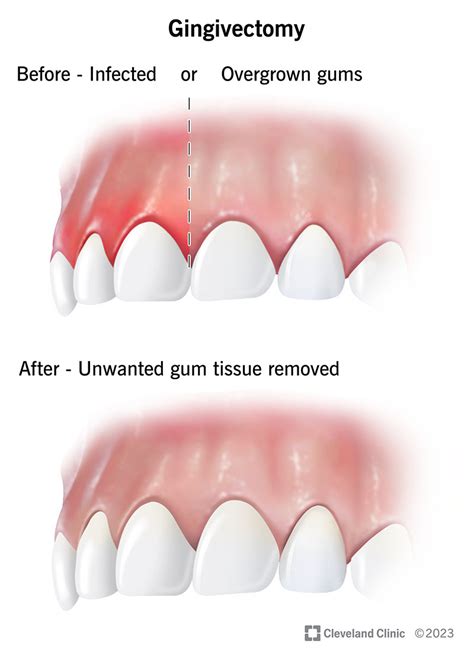11 Canine Teeth Tips For Perfect Smiles

When it comes to achieving a perfect smile, one of the most overlooked yet crucial aspects is the canine teeth. These pointed teeth, located on either side of the incisors, play a significant role in the overall aesthetics and functionality of the mouth. Not only do they contribute to the beauty of a smile, but they also serve as a cornerstone for the dental arch, influencing the alignment and appearance of neighboring teeth. In this article, we will delve into the importance of canine teeth, common issues that may affect them, and most importantly, provide 11 tips for ensuring your canine teeth are in their best condition, contributing to a smile that is both healthy and radiant.
Understanding Canine Teeth
Before we dive into the tips, it’s essential to understand the role and characteristics of canine teeth. Canine teeth are sharper and more pointed than incisors and premolars, serving both functional and aesthetic purposes. They help in piercing and tearing food, and their visibility when smiling makes them a key factor in the attractiveness of one’s smile. The shape, size, and color of canine teeth can significantly influence one’s overall dental appearance.
Common Issues with Canine Teeth
Several issues can affect the canine teeth, ranging from impaction and overcrowding to discoloration and wear. Impacted canine teeth, for instance, can lead to cysts, infections, and damage to neighboring teeth if not addressed. Similarly, wear due to grinding or biting habits can alter the shape and functionality of these teeth. Understanding these potential issues is the first step in maintaining and improving the health and appearance of your canine teeth.
11 Tips for Perfect Canine Teeth
Regular Dental Check-Ups: Regular visits to your dentist are crucial for identifying any issues with your canine teeth or overall oral health early on. Your dentist can provide personalized advice and treatments to ensure your teeth remain healthy and look their best.
Proper Brushing and Flossing: Maintaining good oral hygiene is fundamental. Ensure you brush your teeth at least twice a day, paying special attention to the area around your canine teeth. Also, floss daily to remove any food particles that might get stuck, which can lead to decay or gum disease.
Use of Mouthguard: If you have a habit of grinding your teeth, especially during sleep, consider using a mouthguard. This protective device can help prevent wear on your canine teeth and other teeth, preserving their natural shape and function.
Dietary Choices: Your diet plays a significant role in your oral health. Avoid sugary foods and drinks that can lead to decay, and limit your consumption of hard or crunchy foods that could wear down your teeth.
Cosmetic Dentistry: For issues related to the appearance of your canine teeth, such as discoloration, uneven shape, or size, consider consulting a cosmetic dentist. Procedures like veneers or bonding can significantly improve the aesthetic appeal of your smile.
Orthodontic Treatment: If your canine teeth are impacted or if you have overcrowding issues, orthodontic treatment may be necessary. Braces or clear aligners can help align your teeth properly, improving both the function and appearance of your smile.
Avoid Tobacco and Nicotine: Tobacco and nicotine products can lead to severe discoloration and deterioration of oral health. Quitting these substances can significantly improve the health and appearance of your teeth and gums.
Laser Teeth Whitening: For a brighter smile, consider professional teeth whitening services. This can help remove stains and discoloration, making your canine teeth and overall smile more radiant.
Gum Care: The health of your gums is closely linked to the health of your teeth. Ensure you take good care of your gums by massaging them gently while brushing and using a soft-bristled toothbrush to avoid any damage.
Avoid Using Teeth as Tools: Refrain from using your teeth, including your canine teeth, as tools for opening packages, biting nails, or performing other non-food related tasks. This can lead to chipping, cracking, or wear.
Smile Confidence: Finally, confidence in your smile can make it appear more perfect. Practice good oral hygiene, take care of your teeth, and don’t hesitate to seek professional advice for any issues. A healthy, well-maintained smile is the first step to a perfect one.
Conclusion
Achieving a perfect smile is a multifaceted endeavor that involves understanding the importance of each dental element, including the canine teeth. By following the 11 tips outlined above and maintaining a proactive approach to your oral health, you can ensure your canine teeth are in their best condition, contributing to a smile that is both healthy and visually appealing. Remember, every smile is unique, and with the right care and attention, you can unlock the full potential of your canine teeth and overall dental aesthetics.
How often should I visit my dentist for check-ups to keep my canine teeth healthy?
+Regular dental check-ups should be scheduled at least twice a year. However, the frequency may vary depending on your individual dental health needs. Consult with your dentist to determine the best schedule for maintaining the health and appearance of your canine teeth and overall oral health.
Can cosmetic dentistry improve the shape and color of my canine teeth?
+Yes, cosmetic dentistry offers several procedures that can improve the shape, size, and color of your canine teeth. Veneers, dental bonding, and teeth whitening are among the options. Each procedure has its benefits and is suited for different needs, so it’s essential to consult with a cosmetic dentist to find the best solution for your specific case.

